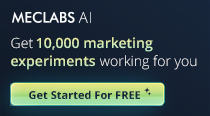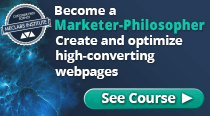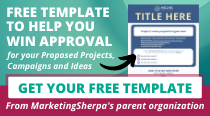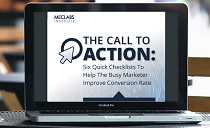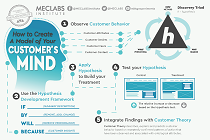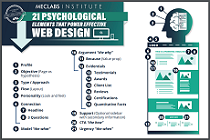May 08, 2001
Article
|
SUMMARY:
No summary available
|
|
***************
B2BMarketingBiz From MarketingSherpa.com
*************** May 8, 2001; Vol. 2, Issue 19
FREE subscriptions at http://www.b2bmarketingbiz.com
CASE STUDY: How Big Law Firm Mayer, Brown & Platt Developed
Marketing Web Sites Based on Potential Client Need
PRACTICAL KNOW-HOW:
How to Run a B-to-B Web Chat Easily and Successfully
Sponsor: Engage
~~~~~~~~~~~~~~~~~~~~~~~~~~~~~~~~~~~~~~~~~~~~~~~~~~~~~~~~~~~
Free Audience Insight Report
EXCEED the ordinary in online advertising results...with
Engage Interactive Media & Analytics. Call 1-877-U ENGAGE
x 31 or click here for a FREE Audience Insight Report!
http://www.engage.com/exceedic
~~~~~~~~~~~~~~~~~~~~~~~~~~~~~~~~~~~~~~~~~~~~~~~~~~~~~~~~~~~
*****
CASE STUDY: How Big Law Firm Mayer, Brown & Platt Developed
Marketing Web Sites Based on Potential Client Need
*****
This Case Study proves that Web marketing has come of age for all
types of organizations -- not just high tech firms, dot-coms and
other "early movers." Founded in 1881, Mayer, Brown & Platt is a
very large traditional law firm serving governments, financial
institutions and corporations around the world. They are also
using customer-interest focused Web marketing tactics that we
could all learn from.
CHALLENGE
How do you market a mega-sized law firm on the
Internet? Mayer, Brown & Platt has almost 1,000 staff in seven
time zones around the world, representing expertise in a wide
range of legal specialties. Jonathan Asperger, the firm's
Director of Marketing and Communications, had a wide range of
strategic approaches open to him.
He could focus on a mega-site to represent the firm's size'; or a
series of regional sites for each city the firm had offices in;
or on sites for each legal specialization such as litigation.
Instead Asperger chose to place the majority of his efforts into
looking at the Internet from the prospective client's point of
view.
CAMPAIGN
Asperger explains, "People don't say, 'Oh I need a
law firm.' Clients hire us for selective purposes. They say, 'I
need somebody to represent me in a shareholder fraud class action
suit.' They don't just hire a litigator. They hire a litigator
for a Supreme Court appeal."
Therefore, Asperger decided to launch a series of sites (or as
he says, "a mosaic of sites") each dedicated to a specific client
need. For example, instead of launching a general litigation
site, Asperger launched sites such as Appellate.net that focuses
specifically on the Supreme Court.
Rather than build highly promotional sites that list credentials,
Asperger decided to focus on useful information. He says,
"People don't want to be advertised to on the Web. We're selling
our intellectual capabilities, insights and experience. When
you're selling an intangible, it's good to make it as tangible as
possible. So we use the Web site to give free samples of our
skills." These include substantive articles and reports.
Asperger explains, "We show them what we're about, rather than
tell them."
This means Asperger's Web team carefully examines all the
articles they gather from attorneys before they add them to the
Web. Asperger says, "I grapple with attorneys -- marketing
versus content. Only if we think it's substantial, do we put it
in there."
Working with an outside designer, Asperger chose a site layout
that would entice visitors to drill down, interact and return
again. He says, "It's lively but not disorganized. I like it
slightly cluttered, kind of like CNBC or Amazon as opposed to
something that's slick and cool and reserved."
Mayer, Brown & Platt's target market is not a mass audience, so
Asperger uses five, low-cost, methods to drive qualified
traffic:
1. Personal word of mouth -- attorneys and staffers refer clients
(and potential clients) to the sites for useful resources.
2. Virtual word of mouth -- site visitors can use the "forward this
article to a friend" function to share content with colleagues.
3. Events -- Asperger adds "a couple of big monitors" to his
firm's booth at conferences, and collects sign-ups for opt-in
newsletters at that time.
4. Opt-in newsletters -- rather than deluging people who sign up
with regular newsletters, Asperger is careful to only send out
emails when there's new content that applies directly to their
interests. Just like the sites themselves, emails are not
heavily promotional. They are usually short notes with a link
back to the site for the complete story.
5. Mondaq -- like many law firms, Mayer, Brown & Platt
distributes its attorney's articles through the Mondaq system
which then feeds them into corporate intranets around the world
through Factiva's news service and others. Asperger has paid
for each article to include a link back to the appropriate site,
so corporate viewers can click through.
RESULTS
Asperger says, "We've found we're getting clients who
wouldn't have found us otherwise because many people don't know
law firms outside their city." He also notes that potential
clients outside the US rely more on the Internet for legal
selection. So much of Mayer, Brown & Platt's recent growth has
been international.
While Asperger doesn't have hard numbers on how many clients the
firm has gained online, he says, "We have anecdotal information -
- people say they hired us because of what they saw on the site.
Usually that's because of the substance. They'll say, 'I had an
appeal in this court and I went to the site and saw you had a lot
of experience in this venue.' It reinforces my belief that
people are looking for very specific expertise."
The sites have also definitely helped Mayer, Brown & Platt's
recruitment efforts at law schools. Asperger says, "We're
competing for the top talent, the creme de la creme. Our Web
sites speak volumes to them."
NOTE: When we told Asperger he'd make a great Case Study he was
a little reticent because he feels his sites aren't all perfect
yet. He said, "Some of them are cool, some of them aren't. But
that's the beauty of the Internet. It's not like I printed
100,000 brochures and now we're stuck with them.
I'd rather have a site up that could be improved, that will act
as a magnet to attract other stuff from the firm. You attract
attention internally by getting something up. So, some of our
sites are still brochures on the Web. OK fine, you're up. Now
let's start improving it!"
http://www.mayerbrown.com
http://www.mondaq.com
*****
PRACTICAL KNOW-HOW: How to Run a B-to-B Web Chat Easily and
Successfully
*****
Remember the days when teleconferencing was all the rage? B-to-B
marketing consultant Oveda Hancock of The Adevo Group, says that
Web chats are not only much easier for marketers to run, but also
chats are more likely to generate warm sales leads for you.
B2B Web chats operate just like B2C Web chats that you may have
seen at AOL or Yahoo. Visitors log into a chat room online, and
post their questions to a moderator. Then the guest star types
in the answers to the questions. The event is more exciting than
pre-written interviews both because it's live, and because
readers get a chance to ask their own questions.
Here's what we learned from Hancock about running B-to-B marketing
chats easily and effectively:
1. Strategy:
Chats are a good way to open conversations, educate a marketplace
and keep sales leads warm. Don't expect to close deals with
them. Your guest star should be an expert that prospects want to
interact with, such as an outside analyst or a techie at your own
firm. Sales people are verboten.
2. Scheduling:
Schedule a chat to last 30, 45 or 60 minutes. Hancock says the
best days of the week are Tuesday-Thursday. "Mondays are
horrendous and Fridays are difficult."
The best time is 2:30pm in the time zone the majority of your
prospects are in. Hancock says, "Executives feel they need their
mornings free to be productive, then at 2pm they are just
trickling back from lunch. If they are just 5-10 minutes late
for the chat, many people won't bother to attend at all. So, try
2:30pm."
3. Getting Attendance:
Market your chat through the media that works best for you.
Email, telemarketing and direct mail all work for different
marketers. Hancock suggests sending the offer twice to your best
list, to get the highest response.
To boost response, offer an incentive. Hancock says high-level
execs prefer useful white papers featuring information that can
improve the bottom line. Influencers (such as mid-level techies)
can be won over with concrete gifts such as a leather card case.
Don't use a high-ticket sweeps though because no one ever thinks
they'll win.
Don't just publicize a day and time for the chat. Instead, tell
people they need to register to attend. Create an auto-email
that immediately sends every registrant an "official" ticket
number so they feel they have "something tangible." (Yes, it can
be the same number for everyone - they won't know.)
Two-three days prior to the chat, send a reminder email (or
telephone call) to registrants that asks "if you can't make it,
please forward your ticket to someone in your organization who
can." You can also ask for pre-chat questions so people are sure
their questions are answered. (Having a few canned questions on
hand during the event itself can be a big help to get more
questions flowing. Nobody wants to be the first to ask questions
in front of their peers!)
Send one last reminder email the morning of the event. This
reminder can make a critical difference in your attendance
figures. Total conversion? Hancock says if you are marketing to
a highly targeted list you can get 10-20% to register to attend a
chat.
4. The Chat Itself:
As we mentioned above, have a few canned questions ready to get
things started.
Allow attendees to choose whether they'd like to be anonymous or
not. According to Hancock usually about 50% will choose not to
reveal their names, partly because their companies may not allow
it. C-level execs are definitely more likely to attend a chat
that allows anonymity.
Let everyone know at the start of the chat that they will receive
a transcript afterwards. This allows them to relax and
participate, rather than worry about taking notes. Also let
everyone know that all pertinent questions will be answered, even
if there's not enough time during the chat itself. You can add
on answers to extra questions to the end of the transcript
afterwards. Some companies even allow attendees up to 10 days
after the event to send in follow-up questions.
Warn your guest star that you prefer all acronyms and other
shortened technical terms to be spelled out whenever possible.
Also, get a list of URLs that your star might link to, and check
them for accuracy prior to the chat. URLs are easy to get wrong!
5. Post-Chat Follow Up:
Hancock highly recommends you send every participant a thank you
note after the chat. When possible include a personal note about
the executive's own participation, such as 'Your question on XYZ
was a valuable one.' She says, "In our thirst to grow business
on the Internet, people have lost touch with the human rules of
business. Send a thank-you!"
Instead of sending the transcript as-is, bear in mind your
company's professionalism will be judged by it. So, have a
grammatical expert clean up punctuation, spelling and any
incorrect URLs first. Plus, add in explanations for any acronyms
or jargon. Then, after including additional questions that came
in after the chat, send a copy of the transcript to all attendees
in a format that's easy to read such as Word.
You should also consider sending a copy of the transcript, or a
link to where it sits on your site, to everyone who couldn't make
the chat itself. Let them know you're sorry they couldn't make
it, you hope they'll find this valuable and you hope to see them
next time.
VENDORS: Here are links to the five service providers Hancock
recommended who can power your chat event:
http://www.conferencecallexperts.com
http://www.imeet.com
http://www.innovia.com
http://www.peakpresentations.com
http://www.placeware.com
NOTE: Hancock can be contacted at cymarketeer@verizonmail.com.
**************************************************************
B2BMARKETINGBIZ.COM INFO
**************************************************************
To subscribe (FREE!) or unsubscribe (EASY!):
Use the box on our Web site
http://www.B2BMarketingBiz.com
Reach 10,000+ B-to-B Marketers Every Week! Free Media Kit:
ads@marketingsherpa.com
Editorial Contact:
editor@B2BMarketingBiz.com
Publisher:
Anne Holland
anneh@MarketingSherpa.com
202.232.6830
(c) Copyright 2001, MarketingSherpa, Inc.


